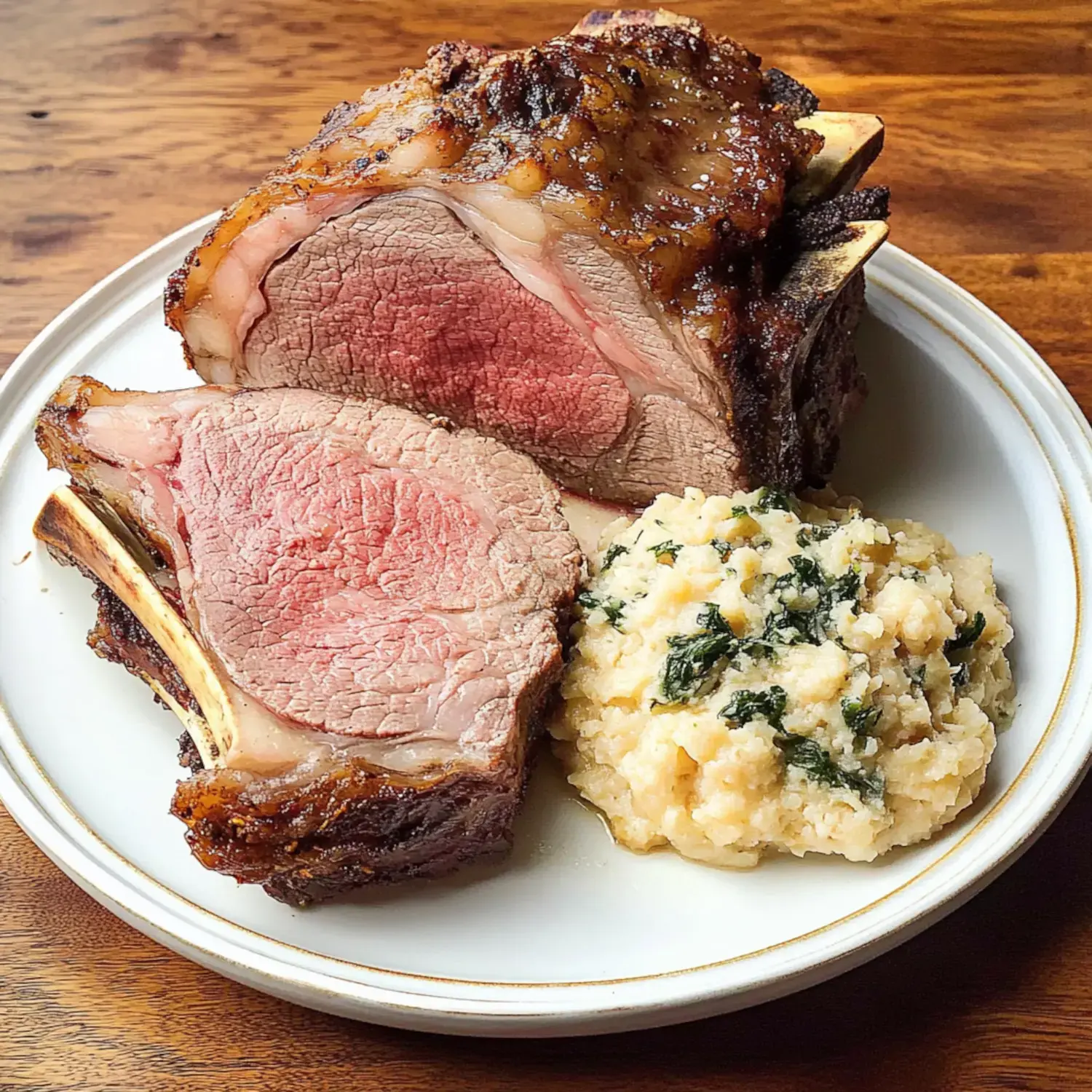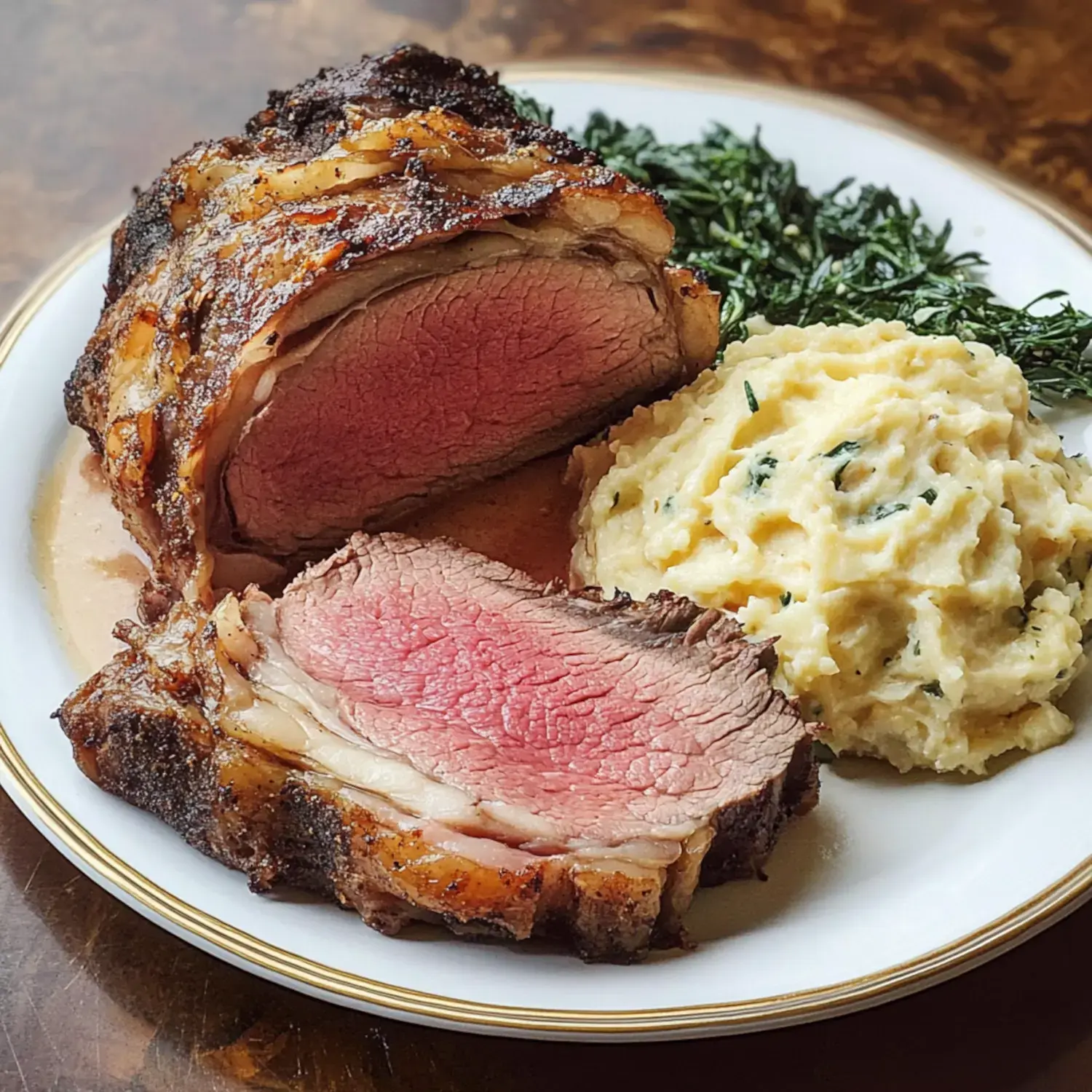 Pin it
Pin it
Our holiday feasts now revolve around my famous prime rib. Nothing beats that brown outer crust breaking open to reveal juicy pink meat inside - it's truly something special. I've tweaked this over many seasons and found the key lies in your cooking approach and taking your time for that jaw-dropping main dish.
Why This Cooking Method Stands Out
The magic happens when you blast it with heat first, then slow things down. This approach hasn't let me down yet - you'll get that incredible outside texture while keeping everything inside perfectly cooked. Guests always think I've spent hours slaving away, but it's actually pretty straightforward.
Getting to Know Prime Rib
Prime rib comes from those choice ribs numbered 6 to 12. If you've had a delicious ribeye steak, you've basically tasted a slice from this bigger cut. I'm a fan of keeping bones for flavor, but you can ask your meat guy to remove and tie them back, which makes serving way easier later on.
Prime Rib Must-Haves
- Prime Rib Roast: For feeding lots of people, I pick one between 12-16 pounds - it's absolutely stunning.
- Kosher Salt and Black Pepper: Don't hold back, these create that amazing outer layer.
- Optional Aromatics: Fresh herbs like thyme and rosemary plus garlic bring wonderful scents.
- Butter: When softened and spread on, it helps create that dream-worthy golden exterior.
Prime Rib Cooking Steps
- Step 1 - Get Ready
- Pull the meat out and let it sit for 2 hours, adding salt and pepper right away when it comes from the refrigerator.
- Step 2 - Hot Start
- Heat your oven to 500°F and cook for 15 minutes to build that beautiful crust. Remember to switch on your kitchen fan.
- Step 3 - Lower The Heat
- Turn down to 325°F and cook roughly 13 minutes for each pound. Check with a thermometer - 115°F for rare, 120-130°F if you want medium.
- Step 4 - Wait Then Slice
- The toughest part is letting it rest for 30 minutes before cutting, but you'll get much juicier meat if you don't rush.
Insider Tricks
Get to know who cuts your meat - they'll hook you up with the best pieces. Don't wait to add seasonings when the roast leaves the fridge, it really counts. You can't skip the resting time, and always grab a good meat thermometer because guessing won't work.
Tasty Sauce Matches
Nothing beats a side of fresh horseradish cream - that cool zip really balances the meaty richness. Making gravy from the pan drippings works great too, or just go with simple au jus to let the natural meat flavors shine through.
 Pin it
Pin it
Storage Smarts
You can keep what's left in your fridge for about 4 days. When it's time to eat again, toss in a bit of beef broth and warm it slowly in the oven so you don't lose that beautiful pink color we worked so hard to get.
Frequently Asked Questions
- → What size roast should I get?
- Get about a pound per person. One rib bone typically serves two people. For example, a 7-pound roast can serve 6-8 people and give you some leftovers. Remember, the bones add flavor too!
- → Why let the meat warm up first?
- Bringing the roast to room temperature helps it cook evenly all the way through. It also gives the seasoning time to soak in and enhances the flavor.
- → Is it okay to skip the searing?
- Skipping is fine, but searing creates a crispy, flavorful crust. This locks in the meat's juices and enhances its taste. Expect a little smoke while searing though!
- → Why is resting the roast so important?
- Let the roast sit for at least 30 minutes after cooking. This redistributes the juices, making each slice super moist. It also allows the temperature inside to rise slightly.
- → Can I prep the sauce ahead of time?
- Absolutely! Make the horseradish sauce up to 24 hours early and keep it in the fridge. The flavors will meld together better. Just stir it up before serving.
